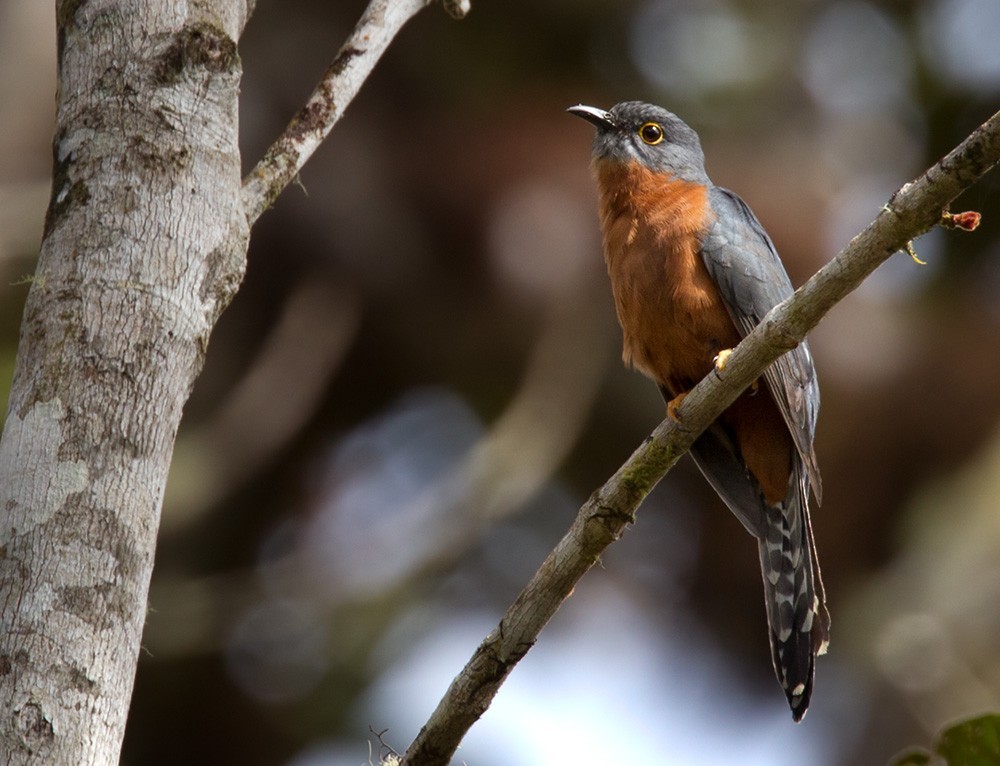Chestnut-breasted Cuckoo
A species of Oriental and Australasian Cuckoos Scientific name : Cacomantis castaneiventris Genus : Oriental and Australasian Cuckoos
Chestnut-breasted Cuckoo, A species of Oriental and Australasian Cuckoos
Botanical name: Cacomantis castaneiventris
Genus: Oriental and Australasian Cuckoos
Content
Description General Info
 Photo By Lars Petersson
Photo By Lars Petersson Description
The chestnut-breasted cuckoo is about 22–25 centimetres (8.7–9.8 in) long. Adults have a dark slaty grey-blue head, back and wings, deep rufous breast and underparts and barred black and white tail. Immatures are dull greyish cinnamon on the head and wings, grading to dull mid brown on the outer parts of the wings, and pale buff or cinnamon on the breast and underparts. The tail is barred mid brown and white. Both adults and immatures have a yellow orbital eye ring. The chestnut-breasted cuckoo is slightly smaller than the similar brush cuckoo (C. variolosus) and fan-tailed cuckoo (C. flabelliformis), but the breast and underparts of the adult chestnut-breasted cuckoo is much darker. 
Size
24 cm
Nest Placement
Tree
Feeding Habits
Chestnut-breasted Cuckoo primarily feasts on insects, favoring caterpillars. Chestnut-breasted Cuckoo forages through the forest canopy and occasionally hovers, also employing a strategy of watching from a low perch before swooping to the ground to catch prey.
Habitat
The chestnut-breasted Cuckoo typically inhabits the interiors of montane and rainforests, as well as scrub areas along riverbanks. Additionally, it can be found in mangrove forests, though it is less common in these areas at sea level. These birds prefer environments that offer dense foliage and a rich ecosystem, which are characteristic of these forested habitats.
Dite type
Insectivorous
General Info
Feeding Habits
Bird food type

 Photo By Lars Petersson
Photo By Lars Petersson Scientific Classification
Phylum
Chordates Class
Birds Order
Cuckoos and Relatives Family
Cuckoos Species
Chestnut-breasted Cuckoo